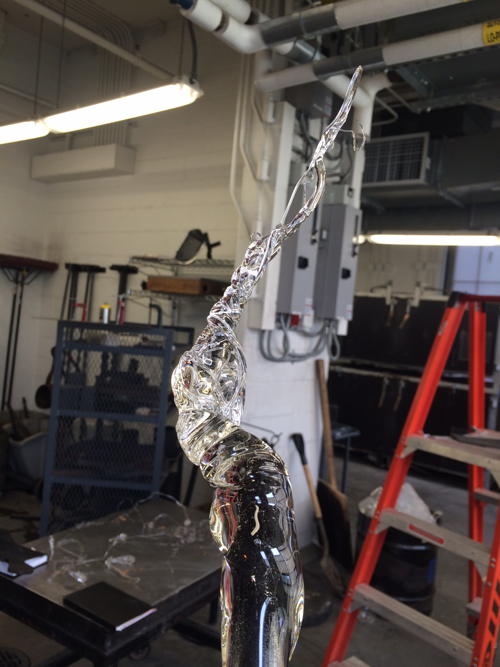Article Brief: A study trip to Rhode Island School of Design in the United States, revealed to the author that working with glass is a choreographed dance.

As soon as the hot shop’s doors are pushed open you can feel the reason behind the name. The hot shop is where glass is changed to a molten state so that it can be worked and reworked into various shapes and forms. I visited the Rhode Island School of Design’s(RISD) hot shop as part of a study trip to the university in the US, and also to collaborate with a fellow artist and designer on a project there.
The glass making setup hasn’t changed much since the realization of glass-blowing after the 1st century. Before that time period, glass was considered a luxurious material that was used for decorative purposes for many centuries, but after the glass-blowing technique was discovered, it was considered more accessible and soon became widely used. The most recent change in the glass-making industry is the invention of automated glass-blowing machines that came to life in the early 20th century, pushing glass into mass production lines. Glass still remains a highly regarded artisanal craft regardless of the machine assistance available.
Sitting in the hot shop are a number of kilns that contain molten glass that are up to 1900 Fahrenheit (around 1040 Celsius). We were instructed to harvest the glass from the kiln by grabbing a long steel rod and jabbing it into the glass in the kiln, then pulling out quickly while turning the rod to ensure that the glass remains on the steel rod.
Stephanie, the hot shop technician in RISD, then continued her dance after spearing the kiln; she carefully and gracefully turned her body towards the bench and then away from it so she can sit on it, then placed the rod on the metal bars on the bench and started rolling the rod and pinching the glass after blowing it. Her moves retained their rhythm as she continued to shape the glass into a functional object. The moves are timed and studied thoroughly, far from being random or left to chance. Trying to mimic Stephanie, we awkwardly stumbled around the kiln, and the heaviness of the rod got the best of us, which caused molten glass to splotch on the ground. We unreservedly remained off beat as we scurried towards the bench, and quickly (and sorely) realized: it’s not as easy as it looks.
There are more techniques used with glass, but that was the main one we learnt to work with. My partner and I managed to create a successful artistic collaboration, needless to say with the generous willingness to help from Stephanie and the glass major students.
After fighting heat, burns, and the ability to not splatter molten glass everywhere, we developed a new found appreciation for glass objects. Coming back from that experience, I started to admire the glass objects we encounter on a daily basis. I wonder about the glass-maker’s dance while forming this object into being, so I am able to enjoy my sweet tea, or give a bunch of flowers a home in the living room.




It's nice art….I love modern design alot..and I really want to spend more time to learn more about that.